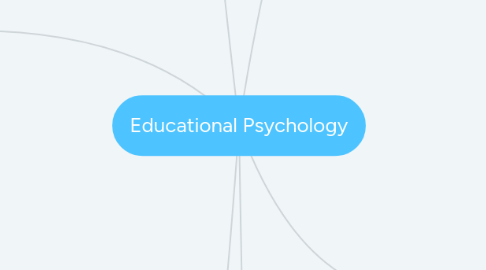Educational Psychology
by MarieJo L'Espérance


1. Learning
1.1. Learning is non-linear, and will happen at different rate for everybody (See Development). Not all students will have the same ZPD (see Teacher's Insight).
1.2. Since learning happens within a ZPD, leaarning acts need to be scaffolded properly so that the learners have the tools to succeed.
1.3. Self-efficacy: the belief that you can learn or perform the task at hand.
1.4. Learning has to be relevant and meaningful so that it can be integrated into the learner's life and experiences.
1.5. Constructivism: knowledge is build from experiences and interactions with the physical and social world (Piaget), and/or from the sociocultural world (Vygotsky).
1.6. Motivation to learn can be either intrinsic and extrinsic (see Teacher's Insight).
1.7. Meaningful learning is done through elaboration (storytelling), organization, visual imagery and relationships between ideas/theories/facts.
1.8. Effective learning strategies (overt and covert) that needs to be taught: *Taking notes (not just for the sake of copying what is on the board!!!) *Creating summaries *Identifying key points in a lecture *Self-explanation and self-questioning (monitoring one's own progress and comprehension.
1.9. Learning depends of: *Attention *Retention *Ability to reproduce *Motivation
2. Teacher's Insight and Tools
2.1. Differenciation: because children develop at different rhythm and learn differently, differenciation is a crucial tool in the teacher's toolkit. It It makes the classroom more inclusive and allows students to work within their own ZPDs.
2.2. Motivation: teachers should help their students cultivate intrinsic motivation, and provide extrinsic motivation when needed.
2.3. Self-reflection and regular (informal) checkpoints allow students (and teachers!) to better understand and evaluate their own learning, help them identify what they need without the pressure/anxiety that comes with formal evaluation.
2.4. Classroom rules and procedures: select a small number of rules and procedures that are logical, adapted and appropriate. Rules and procedures should be modeled by the teacher at all time, and monitored through reinforcement.
2.5. Teachers should privilege intrinsic reinforcement, and use extrinsic reinforcement only in places where the deisred behaviour would be otherwise absent.
2.6. Social constructivism and modeling: students learn by observing others. Successful modeling is achieved, in the relevant context, through competence, and perceived power and prestige. At the high school level, adults are no longer the only models available, and prstige and power is of paramount importance.
2.7. Negative reinforcement (punishment) should be doled out in a humane fashion, with logical and appropriate consequences, and should be followed by cueing and modeling of the appropriate behaviour.
2.8. Learning strategies should be overtly taught. Teachers too often assume that sudents know how to learn, as if it was an innate knowledge.
2.9. Strategies for knowledge constructions: *Observation and experimentation (Makers Movement) *Dialogue and community to broaden and challenge students' perspectives. *Authentic activities *Scaffolded learning.
3. Knowledge Construction
3.1. Knowledge is constructed through change (LEARNING), either in representations (Cognitive Psychology) or in behaviour (Behaviourism).
3.2. Changes come either through social interactions (Social Cognitivists), through reinforcements (Behaviourism) or through experiences (Cognitive Psychology). My understanding is that all three are not mutually exclusive.
3.3. Knowledge is built of: *Theories *Beliefs (Worldviews) *Concepts *Schemas *Scripts
3.4. All of the above can either be "good" (desirable?) or "bad" (undesirable?). "Bad knowledge" could arise from cognitive biases, misremembering, etc. It could be "naïve" theories (like folk-etymologies), or core beliefs that inhibit other knowledge construction (deeply religious people who refuse to entertain the Theory of Evolution).
3.4.1. These biases and "folk" theories can be hard to work through because they are often linked to core beliefs.

